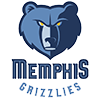The Cubs left-hander slotted in as the team's ace to begin the year. Unfortunately, his start on Opening Day ended prematurely as he took an awkward step fielding a ball. The action resulted in a Grade 1 strain of his left hamstring.
To start, it is important to remember the hamstring is not an individual muscle but instead a group of three muscles working in unison. As a result, recovery comes with a degree of variability. Fortunately, the Grade 1 classification means this is considered a mild strain with no significant tearing of the involved muscle.
However, even a mild strain can be functionally limiting and must be handled with extreme care. This is particularly true with pitchers, as the hamstrings play a vital role throughout the phases of pitch delivery.
Steele's injury involves his trail leg. The hamstring of the trail leg must be able to absorb a high amount of force to allow the pitcher to generate velocity and smoothly transfer that energy toward the plate. Any restriction caused by a strain can alter the injured individual's normal pitching mechanics, making them vulnerable to a secondary injury somewhere else in the body.
The Cubs seem well aware of these concerns and are preparing to be without Steele for at least a month. While that timeline may be on the conservative end, it should allow the muscle time to heal and then additional time for Steele to build up his arm for a return. Ben Brown was expected
The Cubs left-hander slotted in as the team's ace to begin the year. Unfortunately, his start on Opening Day ended prematurely as he took an awkward step fielding a ball. The action resulted in a Grade 1 strain of his left hamstring.
To start, it is important to remember the hamstring is not an individual muscle but instead a group of three muscles working in unison. As a result, recovery comes with a degree of variability. Fortunately, the Grade 1 classification means this is considered a mild strain with no significant tearing of the involved muscle.
However, even a mild strain can be functionally limiting and must be handled with extreme care. This is particularly true with pitchers, as the hamstrings play a vital role throughout the phases of pitch delivery.
Steele's injury involves his trail leg. The hamstring of the trail leg must be able to absorb a high amount of force to allow the pitcher to generate velocity and smoothly transfer that energy toward the plate. Any restriction caused by a strain can alter the injured individual's normal pitching mechanics, making them vulnerable to a secondary injury somewhere else in the body.
The Cubs seem well aware of these concerns and are preparing to be without Steele for at least a month. While that timeline may be on the conservative end, it should allow the muscle time to heal and then additional time for Steele to build up his arm for a return. Ben Brown was expected to take Steele's spot in the rotation but struggled in his first appearance, surrendering six earned runs on five hits and two walks in just a 1.2 innings of work.
Lewis also suffered a lower extremity injury on Opening Day, straining his quadriceps while rounding the bases. While Steele's strain was considered mild, Lewis' injury is being described as a "severe" strain. The word choice suggests his injury is at least a Grade 2, meaning fibers of the involved muscle have torn.
Like the hamstring, the quadriceps is a muscle group. Four different muscles make up the quad and work together to complete movement at the hip and knee. The quad acts as an antagonist to the hamstring with the two "fighting" each other during gait. The balance created between the two helps make movement more controlled and stabilizes the knee. This is particularly important for Lewis who has had two surgeries on the anterior cruciate ligament (ACL) in his right knee.
While the average missed time for a quad strain in baseball is roughly four weeks, those invested in Lewis should anticipate this taking longer than the usual quadriceps strain. His injury history and the classification of strain make the situation more precarious, and there is already an emerging belief he will surpass a four-week estimate. The team plans to reevaluating the situation after a month, suggesting additional time in treatment will be needed. Look for this to carry into May. Willi Castro will take over at third base for the immediate future.
Since last week's column, Lodolo's diagnosis has become clearer. After concerns of a flare up of his previous tibia injury, the Reds pitcher is on the IL with tenosynovitis in his left calf. Certain tendons of the body are surrounded by a synovial sheath that protects the tendon by reducing friction between it and neighboring structures. However, it can become irritated and inflamed, resulting in tenosynovitis. Fortunately, medication and rehab can help treat the problem. Lodolo is already throwing on a rehab assignment. He struck out eight in five innings of work during his first rehab start with Triple-A Louisville and is expected to log a second start later this week. If this goes smoothly as well, look for him to return to the Reds for an April 10 start.
Check Swings
Bo Bichette: The Jays shortstop did not play Sunday due to neck spasms. Spasms are often the result of an underlying issue but hopefully this is nothing more than a mild muscle-related problem. Consider him day-to-day for now.
Junior Caminero: I don't normally highlight minor league injuries, but the Rays top prospect suffered a quad strain over the weekend while playing for Triple-A Durham. Further testing will be performed on the injury to determine the severity of the strain, but it looks like a possible promotion could be delayed by injury.
Sonny Gray: Gray's recovery from a mild hamstring strain may serve as a bit of a template for Steele. The Cardinals right-hander has been sidelined since early March with the injury. He has gradually ramped up his throwing and is slated to pitch for Triple-A Memphis on Wednesday. If that outing goes well, Gray should be able to return to the big-league club a little more than a month after the injury.
Josh Lowe: Lowe's oblique strain is considered mild, but he is not expected to return when first eligible. Continuing the theme in this week's column, the obliques are not an isolated muscle but instead two pairs of muscles, located on either side of the rib cage. Though the exact oblique injured is rarely divulged, a strain to any of the obliques can be extremely limiting in baseball, as nearly every motion involves trunk rotation. As a result, oblique strains often come with a prolonged recovery and are vulnerable to reinjury. While there have been cases in which a player has returned in a week or two, the average time lost is roughly one month. Lowe could be back by late April, but don't be surprised if this lingers into May.
Sean Murphy: The Braves catcher suffered a Grade 1 oblique strain and is already on the IL. As noted with Lowe, oblique injuries can be tricky to manage, but it doesn't appear the injury impacts catchers drastically different than other positional players. Multiple catchers, including Yan Gomes, James McCann, and Mike Zunino, have bounced back after a few weeks on the IL. If all goes well, Murphy should return by the end of the month. Travis d'Arnaud will assume the role of everyday catcher until Murphy is back.







































